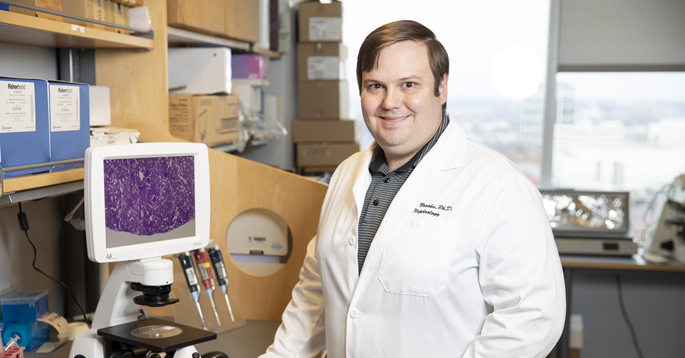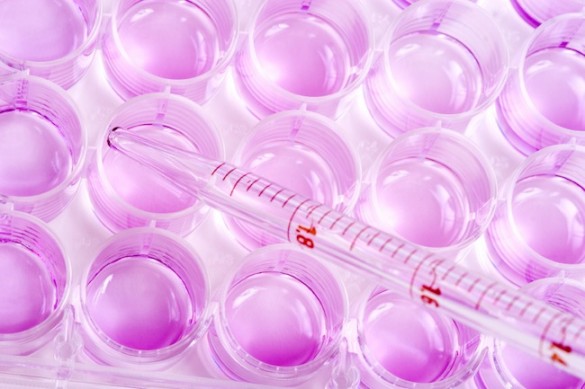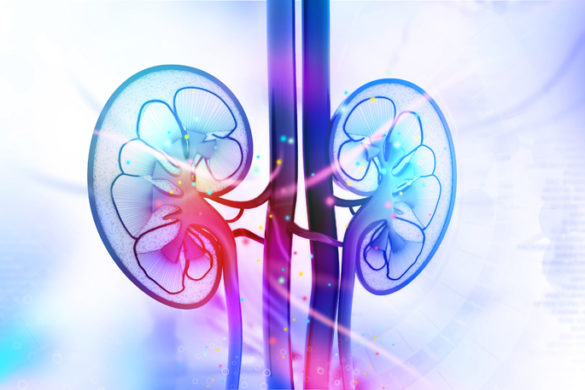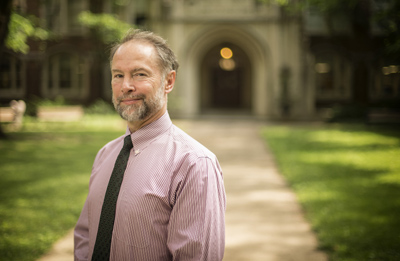
Vanderbilt investigators have discovered a molecular mechanism that promotes chronic kidney disease following kidney injury. The findings, reported in The Journal of Clinical Investigation, identify a novel signaling pathway as a therapeutic target in chronic kidney disease progression.
More than one in seven U.S. adults — about 37 million people — have chronic kidney disease, according to the Centers for Disease Control and Prevention. The number of affected individuals worldwide is staggering: about 800 million. Chronic kidney disease ultimately leads to end-stage renal disease, with treatment options limited to dialysis and kidney transplant.
“The average survival on dialysis is only three to five years; better treatment options are needed to prevent chronic kidney disease progression,” said Craig Brooks, PhD, assistant professor of Medicine and senior author of the current study.
One of the major causes of chronic kidney disease is having an episode of acute kidney injury, which happens when the kidney suffers from a sudden injury. This can occur in many conditions, such as during cardiac bypass surgery or septic infections, exposure to toxins, as a complication of diabetes, and even following short bouts of dehydration. About 13% of hospitalized patients experience acute kidney injury, making them vulnerable to the development of chronic kidney disease.
“We’re focusing on what happens between acute kidney injury and chronic kidney disease — to find ways to prevent that progression,” said Brooks, who is also assistant professor of Cell and Developmental Biology.
The kidney has a remarkable capacity for repair following acute kidney injury, Brooks explained. It has been known for more than 100 years, however, that some kidney epithelial cells never fully recover and drive fibrosis (scarring) of the surrounding tissue, which in turn can promote chronic kidney disease. This phenomenon has been called “maladaptive repair.”
“Many studies have sought to identify these maladaptively repaired cells and the processes that lead them to become pro-fibrotic,” Brooks said.
Brooks and his colleagues have used animal models to compare injured kidneys that progress to chronic kidney disease to those that do not. In previous studies, they discovered greater numbers of cells arrested at a particular phase of the cell division cycle in kidneys that progress to chronic kidney disease, and they implicated the cell cycle protein, cyclin G1.
In the current study, they demonstrated that cyclin G1 is highly expressed in kidney tissue from patients with chronic kidney disease and that it promotes fibrosis in animal models. They found, however, that cell cycle arrest is not critical to cyclin G1’s role in fibrosis and chronic kidney disease. They showed that cyclin G1 acts through another protein called cyclin-dependent kinase 5 (CDK5) to promote kidney cell dedifferentiation (a less “mature” state), which drives fibrosis and chronic kidney disease.
Dedifferentiation is also required for kidney cells to repair after acute injury: Cells revert to an earlier developmental state so that they can divide and replace injured cells. The researchers found that cyclin G1 and CDK5 do not regulate dedifferentiation associated with acute injury repair. Instead, cyclin G1/CDK5 signaling induces a prolonged state of dedifferentiation that contributes to chronic disease.
“Rather than maladaptive repair, there seems to be a distinct pathway of maladaptive dedifferentiation that sustains the chronic kidney injury,” Brooks said. “It doesn’t appear to be a failure to repair; there’s a different process going on.”
The findings suggest that therapeutics targeting the cyclin G1/CDK5 signaling pathway could be a novel approach to preventing chronic kidney disease.
Brooks is also interested in testing cancer therapeutics that promote differentiation (cancer cells also dedifferentiate so that they can divide) as a therapeutic strategy to prevent chronic disease in the injured kidney, he said.
Kensei Taguchi, MD, PhD, and Bertha Elias, PhD, are co-first authors of the JCI paper. Other co-authors include Sho Sugahara, MD, PhD, Snehal Sant, MS, Ambra Pozzi, PhD, Roy Zent, MD, PhD, and Raymond Harris, MD, in the Division of Nephrology and Hypertension at VUMC, Benjamin Freedman, PhD, at the University of Washington, Sushrut Waikar, MD, at Boston University School of Medicine, and Samir Parikh, MD, at the University of Texas Southwestern Medical Center.
The research was supported by the National Institutes of Health (grants DK121101, DK114809, DK069921, DK088327, DK127589, DK119212, DK126006, DK127553), American Heart Association and Department of Veterans Affairs.















